


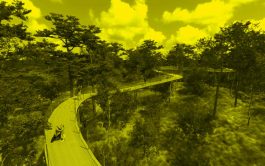
Urban Data Forest reimagines the city as a site of data storage in plants and trees. It explores the possibility of how DNA data storage technology could transform urban spaces, bringing nature and data back to the city.
The project investigates how synthetic biology can help establish regenerative green data infrastructure; a universal biological cloud capable of capturing carbon dioxide and storing digital data.

Two types of Urban Data Forest are proposed: ‘The Breathing Museum’ which serves to archive public and cultural data, and ‘Living Archives’ which are forests primarily dedicated to citizens as facilities in which they can store their personal data.
Based on site specific research in the city of The Hague, Netherlands, Urban Data Forest provides a viable regenerative vision for environmentally friendly data storage that could be achieved by 2050.
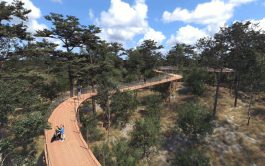
The Breathing Museum is an organic archive powered by DNA data storage technology in plants. It offers a calm, meditative space, where the public are invited to explore digital archives and cultural works through their contact with living organisms such as trees and shrubs.
This type of Urban Data Forest is simultaneously an organic archive and a contemporary cultural institute.As an organic archive, the Breathing Museum preserves significant local data, including scans of old maps, rare books and historical photos. Snapshots of modern life are also regularly added such as viral videos and social media announcements related to The Hague.

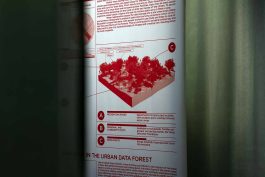

Living Archives are Urban Data Forests offering local citizens a way to store their digital files in the DNA of living plants and trees.
Rather than storing their data in far flung, carbon emitting server farms, citizens and communities can obtain plots for themselves in nearby data forests to grow and care for their data.
From family pictures to their favourite NFTs, these forests act as truly local and personal archive facilities. Data may be open-source or encrypted depending on the type of data and needs of the citizen.
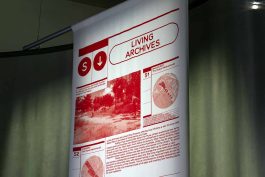

Like all Urban Data Forests, Living Archives contribute to the creation of new types of jobs.
Bio-archivists know everything about the data stored in the plants; some used to work as archival specialists, while others are synthetic biologists trained to transform digital media into sequences of DNA for storage in plants and trees.
Data Migration teams keep everyone updated with how data is spreading in the forest through pollination.
Data Harvesters are specialised foragers who care for plants and the data inside. If a plant is unwell they ensure data is backed up across organisms, seeds and synthetic DNA.
As part of the Urban Data Forest project we carefully selected organisms that could formulate a possible data forest of the future.
Looking at native species from across the Netherlands we calculated a number of attributes including organic data storage per species, carbon remediation capabilities and the lifetime carbon absorption for the proposed urban forests.
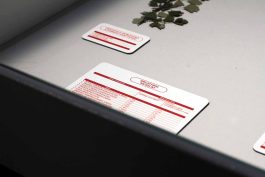
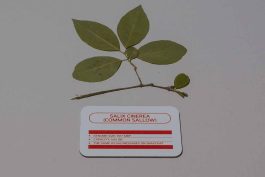
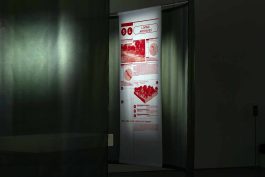
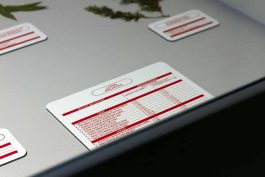
Additional Credits:
Visual identity: Aleksander Znosko Studio https://znosko.pl
Photography: Aleksander Znosko Studio https://znosko.pl
Design collaborator: Connor Dolan
Project Advisor: In4Art
Plant samples: TU Delft Botanical Gardens
Actors: Christopher Cadostin, Monja Simon


Urban Data Forest was created as part of Repairing the Present, an EU S+T+ARTS Residency.
The project was developed in collaboration with and co-commissioned by In4Art and engineering firm Witteveen+Bos, supporting research into an environmental vision for the city of The Hague (NL) in 2050.

Urban Data Forest reimagines the city as a site of data storage in plants and trees. It explores the possibility of how DNA data storage technology could transform urban spaces, bringing nature and data back to the city.
The project investigates how synthetic biology can help establish regenerative green data infrastructure; a universal biological cloud capable of capturing carbon dioxide and storing digital data.

Two types of Urban Data Forest are proposed: ‘The Breathing Museum’ which serves to archive public and cultural data, and ‘Living Archives’ which are forests primarily dedicated to citizens as facilities in which they can store their personal data.
Based on site specific research in the city of The Hague, Netherlands, Urban Data Forest provides a viable regenerative vision for environmentally friendly data storage that could be achieved by 2050.
Breathing Museum

The Breathing Museum is an organic archive powered by DNA data storage technology in plants. It offers a calm, meditative space, where the public are invited to explore digital archives and cultural works through their contact with living organisms such as trees and shrubs.
This type of Urban Data Forest is simultaneously an organic archive and a contemporary cultural institute.As an organic archive, the Breathing Museum preserves significant local data, including scans of old maps, rare books and historical photos. Snapshots of modern life are also regularly added such as viral videos and social media announcements related to The Hague.


Living Archives

Living Archives are Urban Data Forests offering local citizens a way to store their digital files in the DNA of living plants and trees.
Rather than storing their data in far flung, carbon emitting server farms, citizens and communities can obtain plots for themselves in nearby data forests to grow and care for their data.
From family pictures to their favourite NFTs, these forests act as truly local and personal archive facilities. Data may be open-source or encrypted depending on the type of data and needs of the citizen.


New Jobs in the Urban Data Forest
Like all Urban Data Forests, Living Archives contribute to the creation of new types of jobs.
Bio-archivists know everything about the data stored in the plants; some used to work as archival specialists, while others are synthetic biologists trained to transform digital media into sequences of DNA for storage in plants and trees.
Data Migration teams keep everyone updated with how data is spreading in the forest through pollination.
Data Harvesters are specialised foragers who care for plants and the data inside. If a plant is unwell they ensure data is backed up across organisms, seeds and synthetic DNA.
As part of the Urban Data Forest project we carefully selected organisms that could formulate a possible data forest of the future.
Looking at native species from across the Netherlands we calculated a number of attributes including organic data storage per species, carbon remediation capabilities and the lifetime carbon absorption for the proposed urban forests.




Additional Credits:
Visual identity: Aleksander Znosko Studio https://znosko.pl
Photography: Aleksander Znosko Studio https://znosko.pl
Design collaborator: Connor Dolan
Project Advisor: In4Art
Plant samples: TU Delft Botanical Gardens
Actors: Christopher Cadostin, Monja Simon


Urban Data Forest was created as part of Repairing the Present, an EU S+T+ARTS Residency. The project was developed in collaboration with engineering firm Witteveen+Bos supporting research into an environmental vision for the city of The Hague (NL) in 2050.